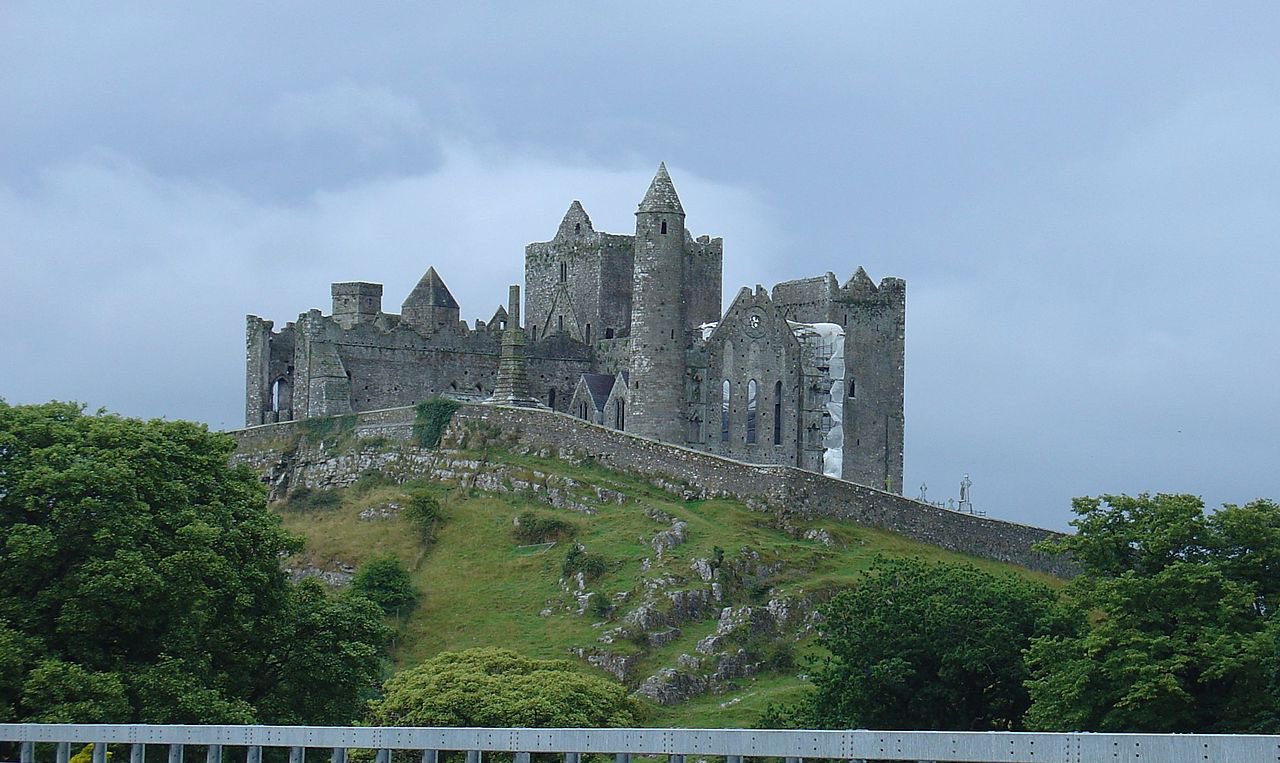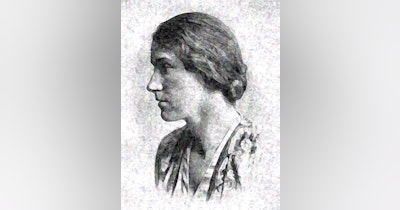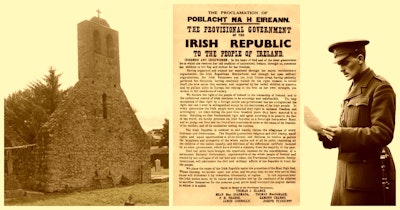Brian Boru - Henry MacManus lithograph, mid 19th century
Brian Boru or Brian Bóruma mac Cennétig is believe to have been born C. 941 into a family of 12 sons. What we know about Brian is obscured by the passage of over 1,000 years. The name Boru apparently is a moniker attributed to him after his death an refers to his place of origin, Béal Bóraimhe near Killaloe where it is thought that he was born.
Have you listened to our podcast? Get the latest on our Episode Page.
While Brian’s Dál Cais family were influential in their Clare locale, they did not have a long history of prominence across Ireland. The family’s rise began with Brian’s father Cennétig mac Lorcáin who’s ambition for greater renown led to the death of many of Brian’s siblings. By the time Cennétig died c. 951, four of his sons had perished in battle. His successor Lachtna fell in battle two years later and was succeeded by his more successful brother Mathgamain who rose to the Kingship of Munster, traditionally installed at Cashel.

Despite surviving till 976, Mathgamain died violently too, leaving the way open for a 35 year old Brian to assume leadership. Brian proved to be even more adept than his deceased brother and gained effective control of Munster by 978. While he had gained provincial control, that would not sate his ambition and using a combination of land and naval forces penetrated deeper into Ireland through the Shannon and along the coasts.
Ultimately Brian’s ambition was to control all of Ireland and to seize the High Kingship from the dominant Uí Néill family of Ulster. The effort to gain and maintain control of Tara’s Lia Fháil would occupy Brian for the rest of his life.

There were multiple attempts to deny Brian’s dominance and the Battle of Clontarf in 1014 was an example of the restive nature of Ireland’s dynastic struggles. The battle is one of the most significant in Irish history but the complex forces at play have been obscured in the ensuing 1,000 years.
Excellent piece from UCD historian Elva Johnston detailing the complexity of the Battle of Clontarf
The aged Brian died at Clontarf at the hands of Bróðir, a Dane from the Isle of Man. Traditionally the date of Brian's death and the battle are listed as April 23, 1014 which aligns with Good Friday, likely embellishing the notion that the encounter represented a clash between the Christian Irish against pagan Norse Vikings.
For the Dál Cais, the outcome of Clontarf proved to be a double tragedy, Brian’s ablest son Murchad also died in battle. The loss of both men resulted in Ireland reverting to its pre Boru dueling fiefdoms. The dead victors of Clontarf were brought for burial at Armagh, the seat of St. Patrick.

Many of the details in this post are open to dispute, however, the Battle of Clontarf lived on in Irish memory and was invoked for political purposes in subsequent centuries. Leaders of the Irish nationalist struggle against British domination moulded the facts surrounding the battle to suit their needs contributing to a murky understanding of the bloody encounter and Brian himself,
How the story of Clontarf was used throughout Irish history

















